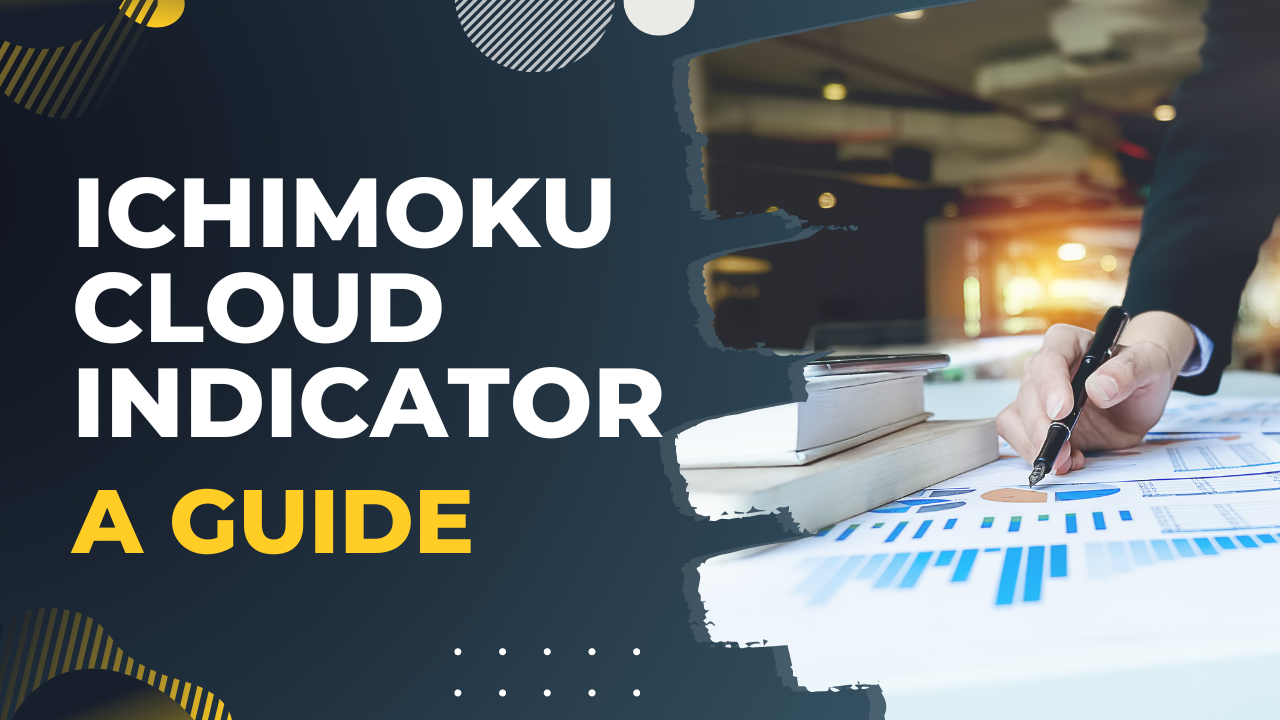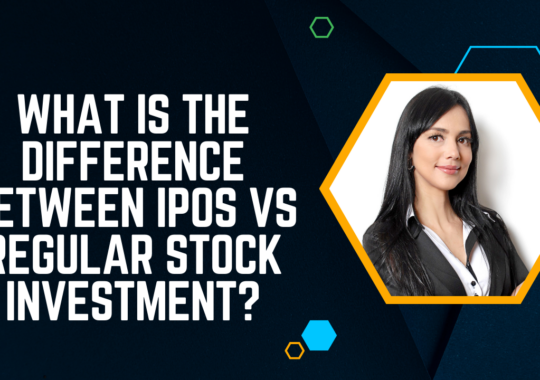The world of trading can be a complex and overwhelming one, especially for beginners. With so many technical analysis tools and indicators available, it can be challenging to know which ones to use and how to use them effectively. One of the lesser-known indicators that can be extremely useful for traders is the Ichimoku Cloud Indicator. Founded by Japanese journalist Goichi Hosoda in the late 1930s, the Ichimoku Cloud Indicator is a versatile and powerful tool that can help traders identify trends, support as well as resistance levels, and potential buy and sell signals.
Take a look at :Tips and Strategy to opt for Trading in Bank Nifty Option

In this article, we will provide a comprehensive guide to the Ichimoku Cloud Indicator, including its components, how to interpret its signals, and how to use it in conjunction with other technical indicators. Whether you are new to trading or a seasoned pro, this guide will give you a solid understanding of the Ichimoku Cloud Indicator and how to use it to improve your trading strategy.
Here are some ways traders can use the Ichimoku Cloud to improve their trading
- Identify market trends: The Ichimoku Cloud is best known for its ability to identify trends. Traders can use the Cloud’s color to determine the direction of the trend, with green indicating a bullish trend and red indicating a bearish trend. When the Cloud is flat, it indicates a market in consolidation or a trend that is losing momentum.
- Use the Cloud’s thickness to gauge market volatility: The thicker the Cloud, the higher the volatility of the market. Traders can use this information to adjust their trading strategies accordingly. For example, when the market is highly volatile, traders may want to widen their stop-losses to account for potential fluctuations.
- Use the Cloud’s support and resistance levels: The Ichimoku Cloud can also be used to identify potential support and resistance levels. The Cloud’s upper and lower borders serve as dynamic support and resistance levels, respectively. When the price is above the Cloud, the upper border acts as the first support level, and when the price is below the Cloud, the lower border acts as the first resistance level.
- Trade with the Cloud’s momentum: The Cloud can also be used to identify the momentum of the market. When the price is above the Cloud, it indicates a bullish momentum, and traders may want to consider buying opportunities. When the price is below the Cloud, it indicates a bearish momentum, and traders may want to consider shorting opportunities.
- Use the Tenkan-sen and Kijun-sen lines for trading signals: The Tenkan-sen and Kijun-sen lines can be used to generate buy and sell signals. When the Tenkan-sen line surpasses the Kijun-sen line, it’s a bullish signal, and traders may want to consider buying opportunities. When the Tenkan-sen line drops below the Kijun-sen line, it’s a bearish signal, and traders may want to consider selling opportunities.
Interpreting the Ichimoku Cloud Indicator
- The Ichimoku Cloud Indicator is a technical analysis tool used by traders to evaluate trends in a financial asset.
- It consists of several components, including the Cloud, the Tenkan-sen and Kijun-sen lines, the Chikou Span, and the Senkou Span.
- Traders can use the Cloud to identify whether the price of the asset is currently bullish or bearish.
- The crossover of the Tenkan-sen and Kijun-sen lines can also provide signals, with a bullish signal generated when the Tenkan-sen line surpasses the Kijun-sen line, whereas a bear signal generated when the Tenkan-sen line drops past the Kijun-sen line.
- The Chikou Span position can also indicate whether the current trend is bullish or bearish, with the Chikou Span above the price indicating a bullish trend and the Chikou Span below the price indicating a bearish trend.
- The Senkou Span cross is another signal that traders look for, with a bullish signal generated when Senkou Span A surpasses Senkou Span B and a bearish signal generated when Senkou Span A drops below Senkou Span B.
- By using these signals, traders can make more informed decisions about when to enter or exit a position in a financial asset.
Also read:
Trident Share Price Target 2023 to 2030
Is Cryptocurrency Taxed in India?
Indices Trading Strategies You Must Know
FAQs
What do the different elements of the Ichimoku Cloud Indicator signify?
The different elements of the Ichimoku Cloud Indicator signify different levels of support and resistance and provide information on trend direction and momentum. The Tenkan-Sen (Conversion Line) and Kijun-Sen (Base Line) show short-term and long-term trend lines, respectively. The Chikou Span (Lagging Line) shows the current price relative to historical price action. The Senkou Span A and B (Leading Spans) create the “cloud” which provides information on future support and resistance levels.
How can the Ichimoku Cloud Indicator be used to identify trend direction?
The Ichimoku Cloud Indicator can be used to identify trend direction by observing the Tenkan-Sen, Kijun-Sen, and the position of price relative to the cloud. A bullish trend is indicated when the Tenkan-Sen is above the Kijun-Sen and the price is above the cloud. A bearish trend is indicated when the Tenkan-Sen is below the Kijun-Sen and the price is below the cloud.
Can the Ichimoku Cloud Indicator be used for all financial instruments?
The Ichimoku Cloud Indicator can be used for all financial instruments, including stocks, forex, commodities, and cryptocurrencies.
How can the Ichimoku Cloud Indicator be used to generate buy and sell signals?
The Ichimoku Cloud Indicator can be used to generate buy and sell signals by observing the crossover of the Tenkan-Sen and Kijun-Sen lines, and the position of price relative to the cloud. A buy signal is reflected when the Tenkan-Sen surpasses the Kijun-Sen and the price is above the cloud. A sell signal is generated when the Tenkan-Sen drops below the Kijun-Sen and the price is beneath the cloud.
What are the potential drawbacks of using the Ichimoku Cloud Indicator?
The potential drawbacks of using the Ichimoku Cloud Indicator include the complexity of the indicator, which may be overwhelming for some traders, and the possibility of false signals during ranging markets.
How can the Ichimoku Cloud Indicator be used for risk management?
The Ichimoku Cloud Indicator can be used for risk management by using the support and resistance levels provided by the cloud to set stop-loss and take-profit levels.
What are the optimal settings for the Ichimoku Cloud Indicator?
There are no fixed optimal settings for the Ichimoku Cloud Indicator, as the indicator’s parameters can be adjusted based on the trader’s preferences and the timeframe being used. However, the default settings are commonly used as a starting point.
Conclusion
The Ichimoku Cloud Indicator is a versatile technical analysis tool that can be used in various ways to assist traders in making informed trading decisions. It offers a comprehensive view of the market and provides several key levels of support and resistance, as well as potential buy and sell signals. By combining its various components, traders can gain a deeper understanding of market trends and momentum, helping them to better predict future price movements.
While the Ichimoku Cloud Indicator may appear complex at first, with practice and experience, traders can develop a deeper understanding of its components and how to interpret its signals. By using this powerful tool in conjunction with other technical analysis techniques and risk management strategies, traders can gain a competitive edge in the markets and achieve greater success in their trading endeavors.



